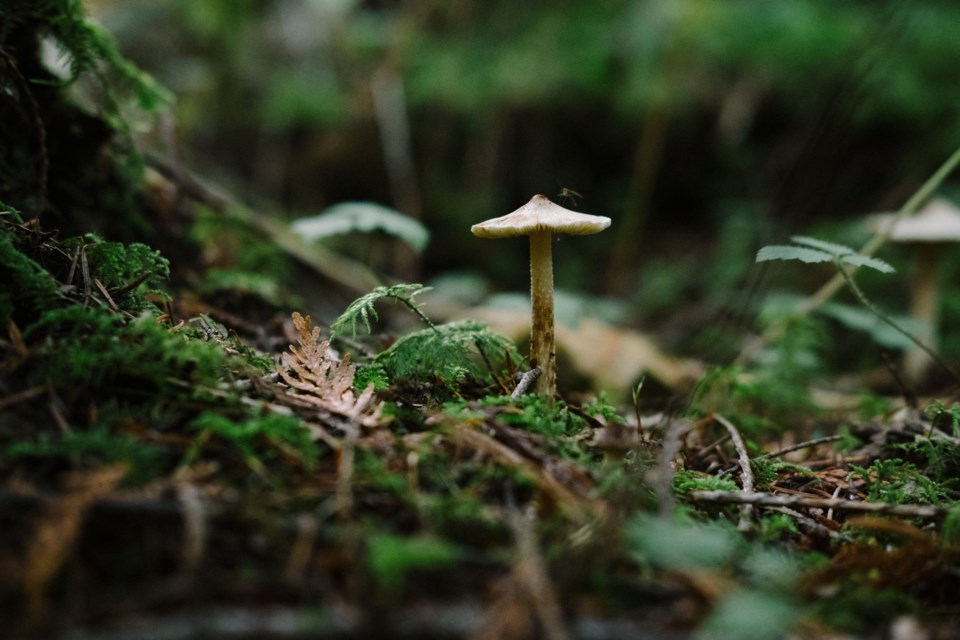The Longmont Leader accepts contributions, photos, and op-eds for publication from community members, business leaders and public officials on local topics. Publication will be at the discretion of the editor and published opinions do not represent the views of the Longmont Leader or its staff. To submit a contribution, email [email protected].
Imagine you are hiking on one of Colorado’s beautiful mountain trails. There’s a chance you’ll see a herd of elk in the distance, observe a rabbit bouncing around a rocky open area, or hear the signature call of a mountain chickadee in the treetops. Hiking on, you’ll see yellow rabbitbrush, blue spruce, and a variety of other shrubs and trees. In looking closer, you might start to see that these plants are home to jumping spiders, flies, and bees.
We can see a lot on a single walk in our state, but this is just the beginning. The animals and plants you see on an evening hike are just a small portion of the millions of living organisms that are found across the world. The incredible variety of life that we find on earth is known as biodiversity, and vital for sustaining healthy habitats everywhere, so the more the merrier.
Biodiversity is necessary for habitats to thrive. Consider one plant in a rainforest. As it grows, it may be visited by many insects and other small animals that use its leaves as shelter or food. Perhaps it is visited by larger predators that are looking to eat the other visitors. When it blooms, its flowers are visited by pollinators, enticed by its sweet nectar, who will drop off pollen from another flower they’ve visited, ensuring that the plant can produce a seed. Even as the plant dies, it’ll be visited by animals like cockroaches that will eat it and recycle the nutrients from the dying plant into the soil. Each of these organisms—the animals and plants—play a role in this cycle or system and even a small loss, like taking one link out of the chain, can cause the system to break.
If the flower from above were to vanish then pollinators wouldn’t be able to find nectar, no seed would be produced, and the soil wouldn’t be enriched. Seemingly little changes like a new animal—one from a different area—coming in can cause native animals to vanish which can, in turn, cause other changes to the system. A native species dying off can leave plants unpollinated which may mean there are no seeds for animals to eat causing another animal to vanish and so on, like dominoes falling in line, until the system collapses.
If seemingly little changes can have big effects, then it follows that other threats like climate change can have a significant impact on biodiversity and threaten the systems—or ecosystems—we’ve been exploring. Climate change can cause ocean temperatures to rise and alter seasons through changing temperatures. These effects may seem small but can have huge impacts on the animals in these ecosystems. Corals, for example, rely on specific water conditions which can fall out of balance by changing temperatures leading to coral death. Climate change affects our world in many ways, some of which we don’t understand right now.
Corals are an excellent example of an invertebrate, an animal without a backbone. Invertebrates are the core of these diverse ecosystems, as they make up 97% of the animal species on earth, including one million insects, spiders, octopuses, and more. This means that in every ecosystem, whether it be the mountains of Colorado, the deepest depths of the oceans, or the area around a single rainforest plant, invertebrates are abundant and essential. They are most often pollinators, nutrient-recyclers, and important food sources for other animals.
You may be wondering; how does biodiversity affect us? We, as humans, rely on biodiversity and healthy ecosystems for the air we breathe, the water we drink, natural pest control and so many other things. We are linked to the world we live in. And you can help keep it healthy! Building pollinator friendly gardens or exploring methods of pest control that reduce pesticides are great ways to support pollinators. Joining a community science project will let you be part of the worldwide team monitoring our ecosystems and keeping them healthy. By simply reading this article, you’ve already taken a huge step because you can talk to friends and family about what you’ve learned! Hopefully this column has further fueled your quest to learn more and inspire you to put this new knowledge into action.



